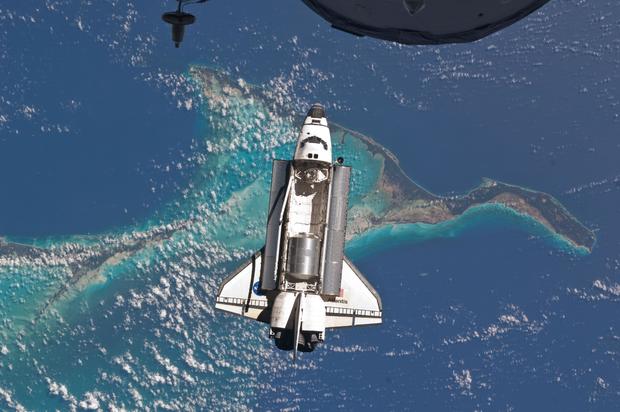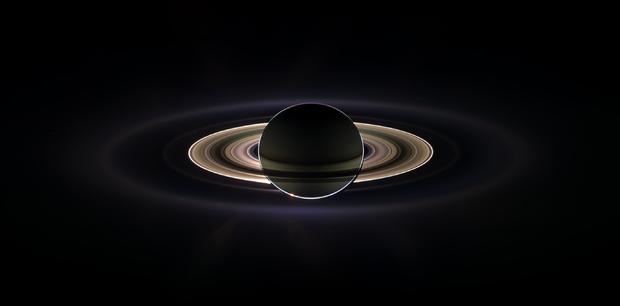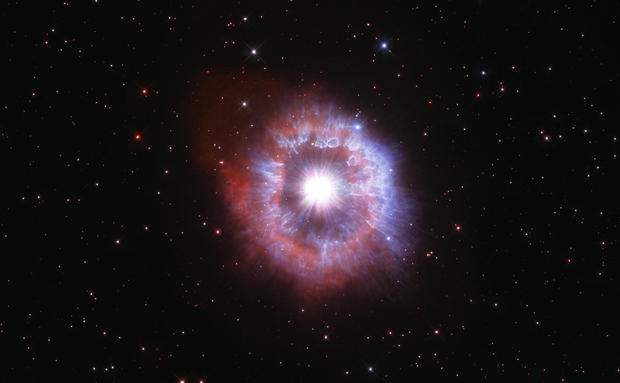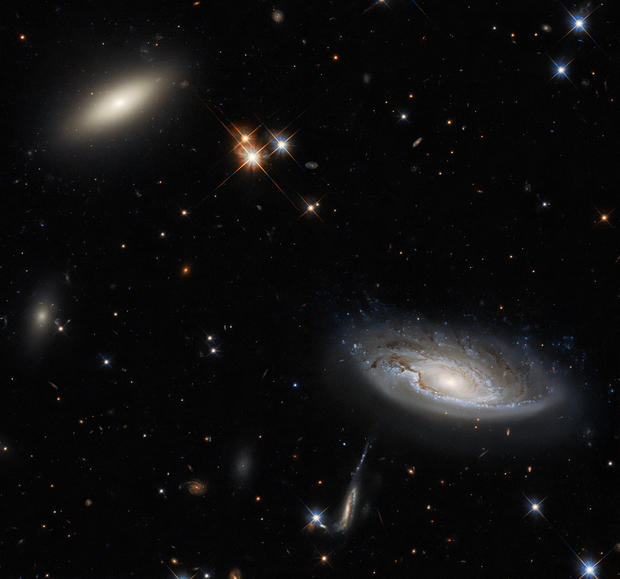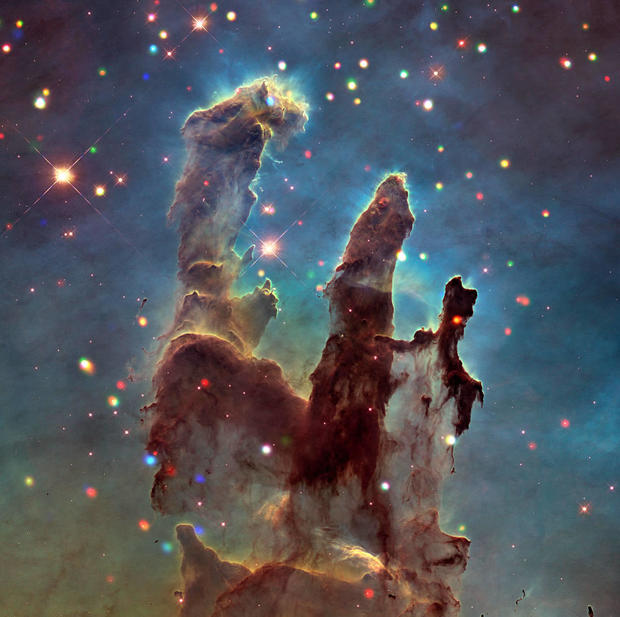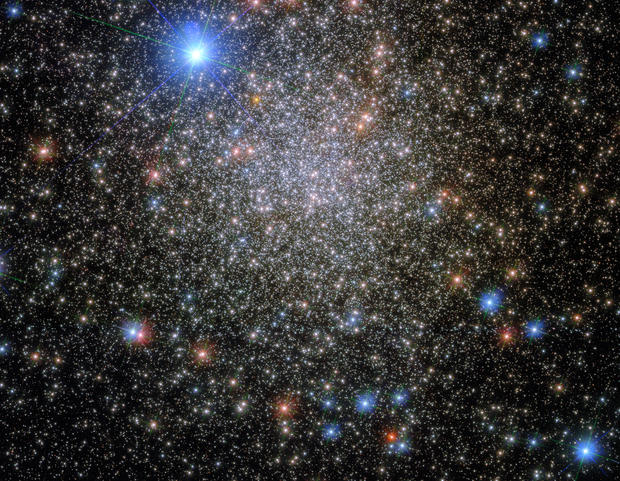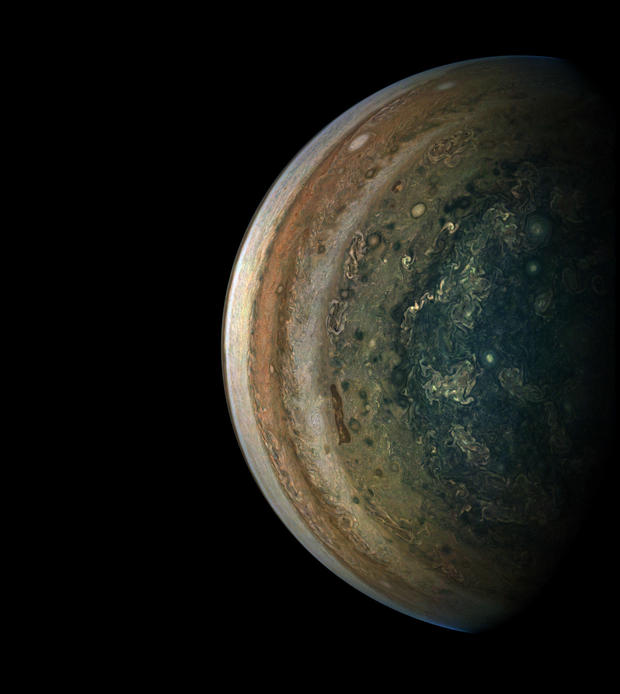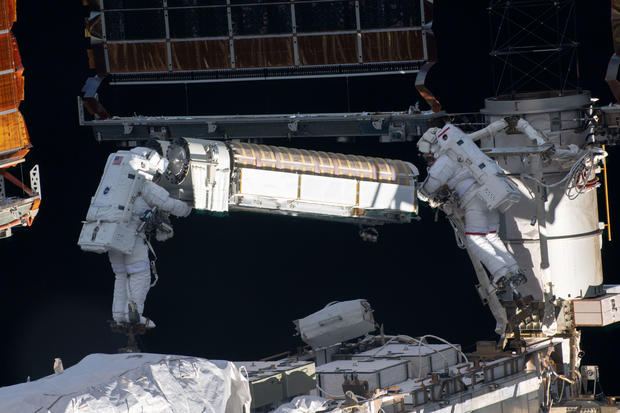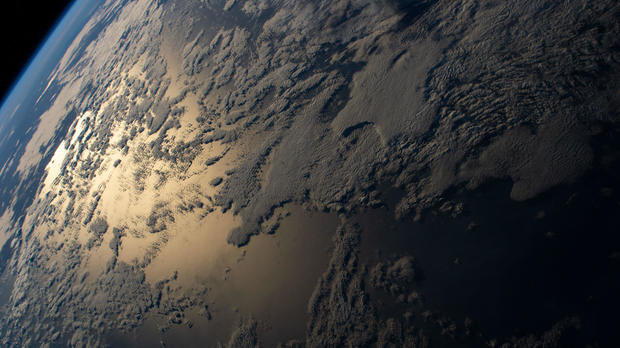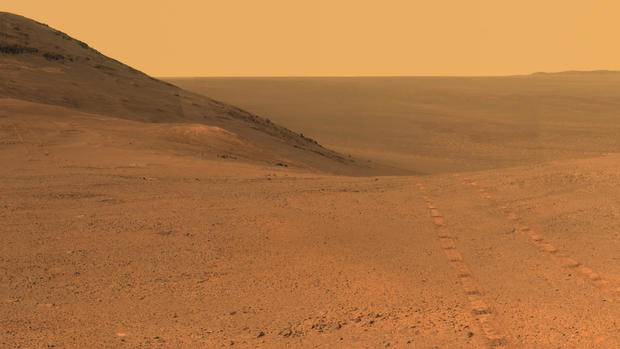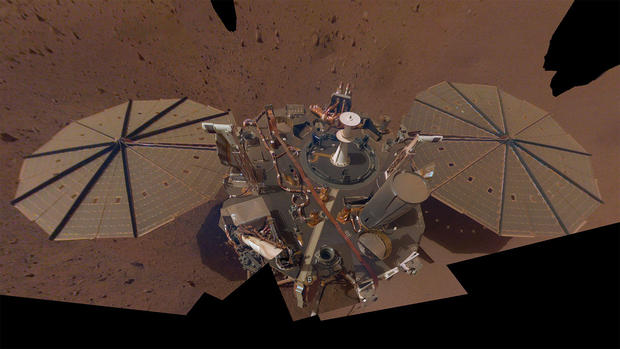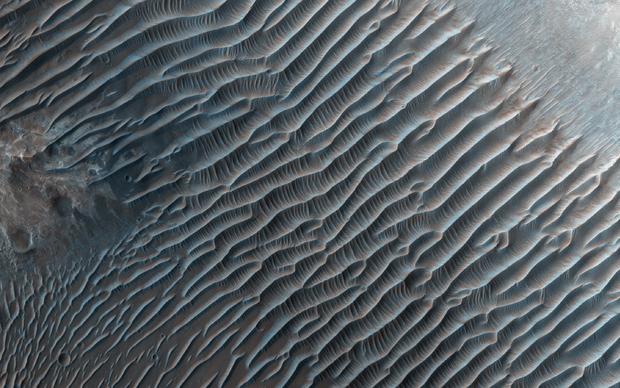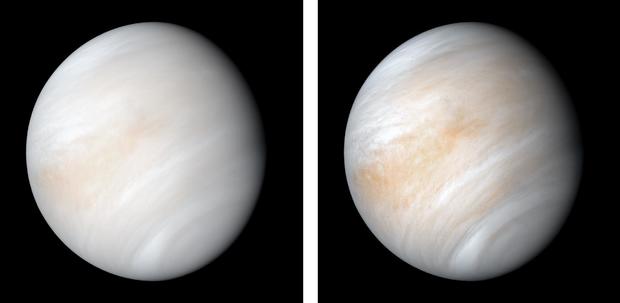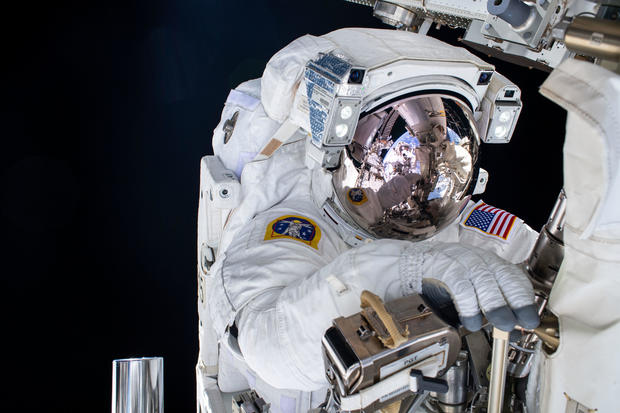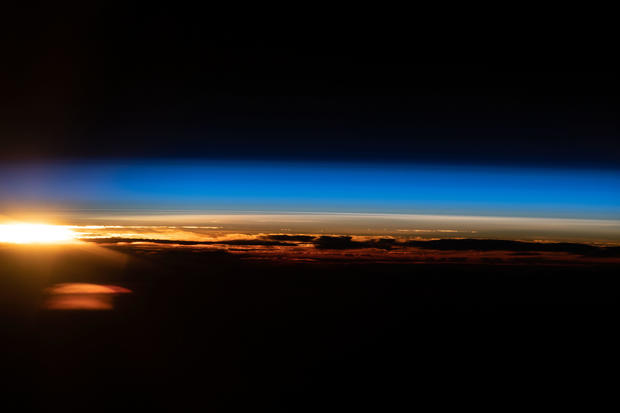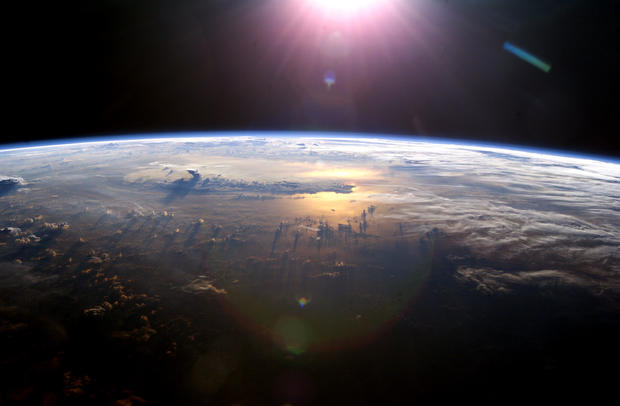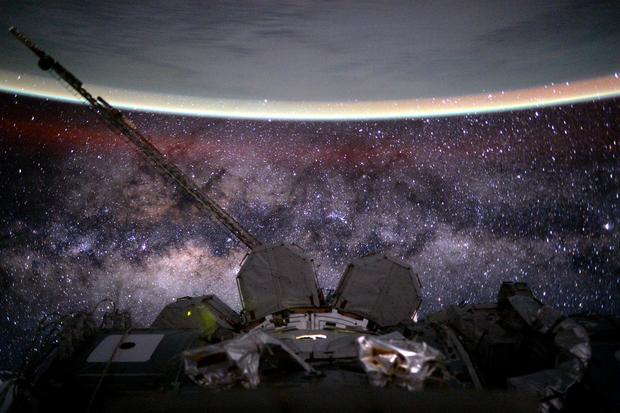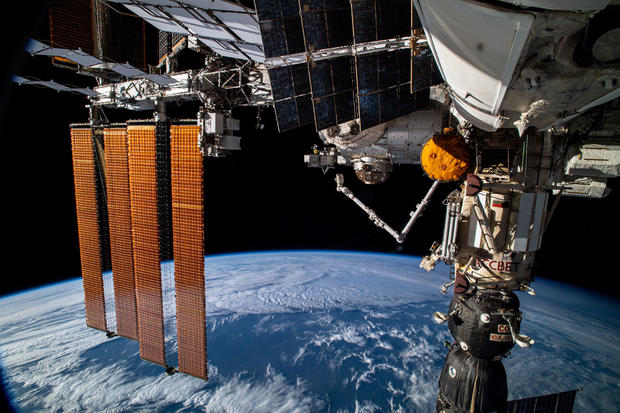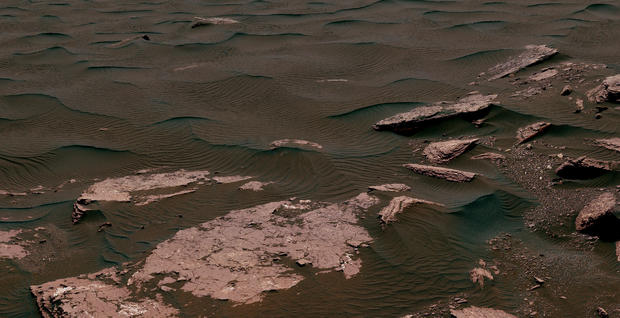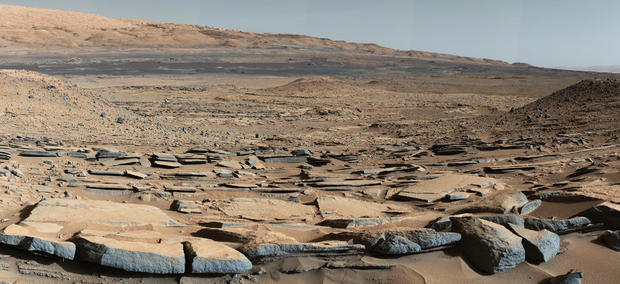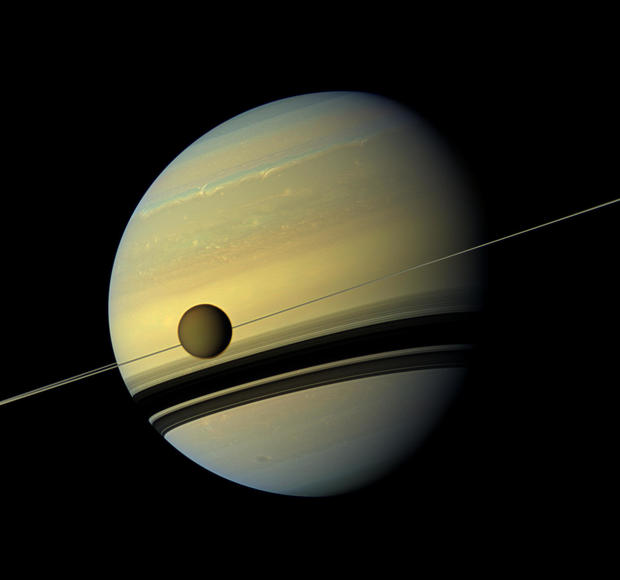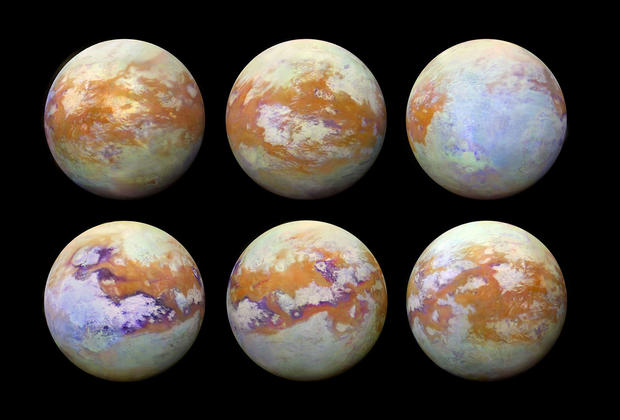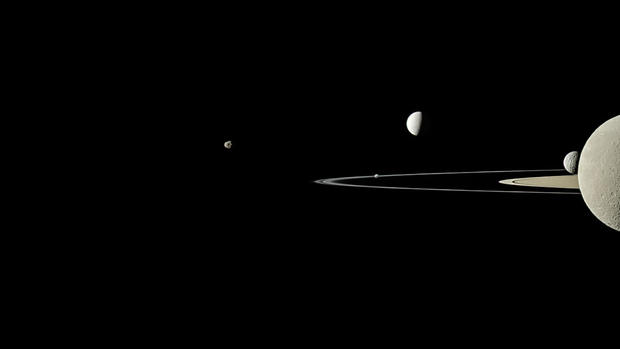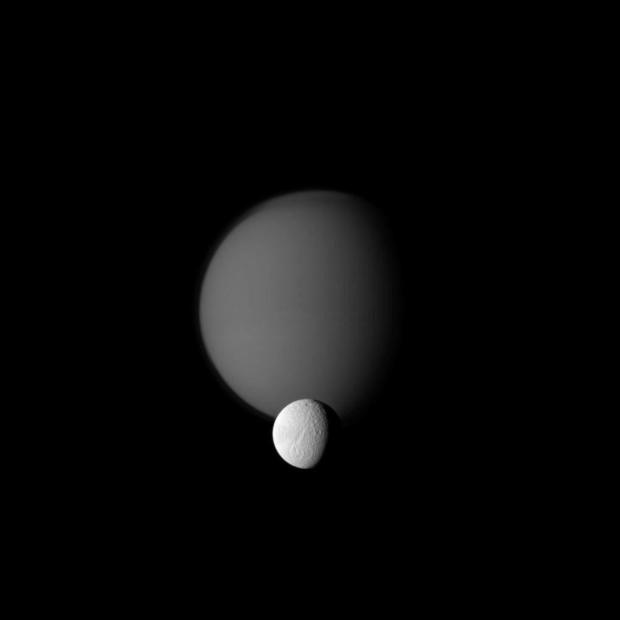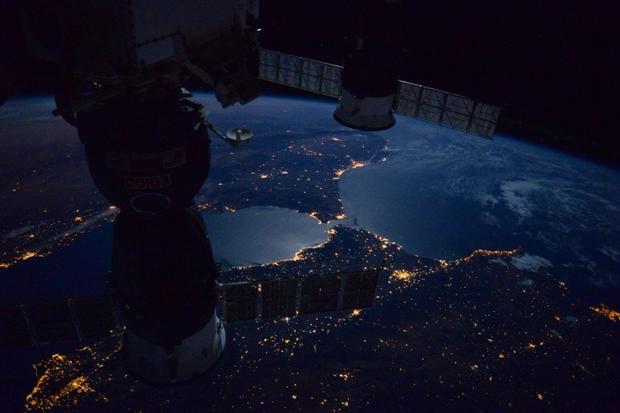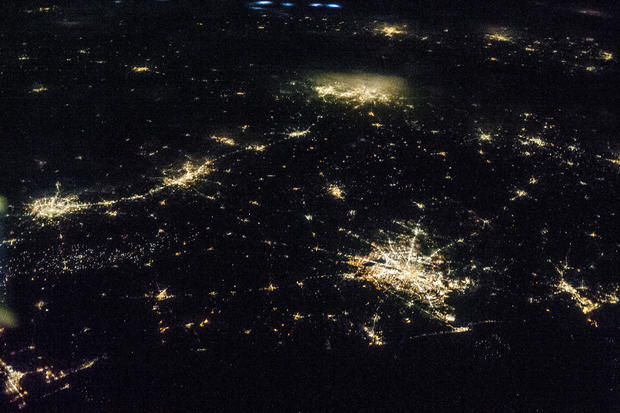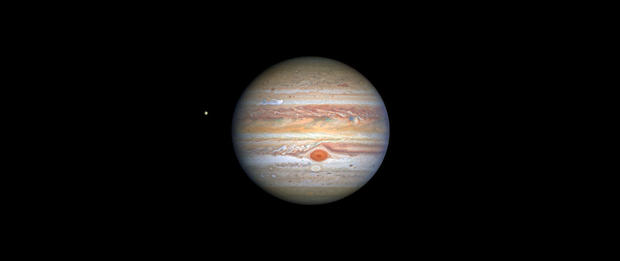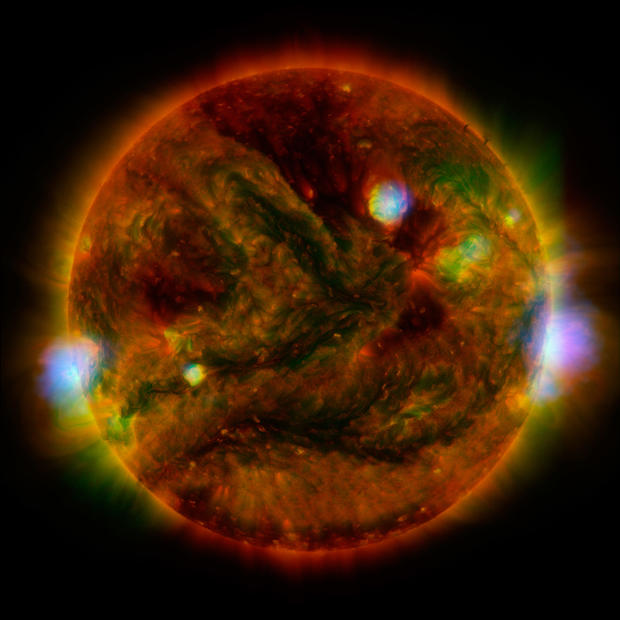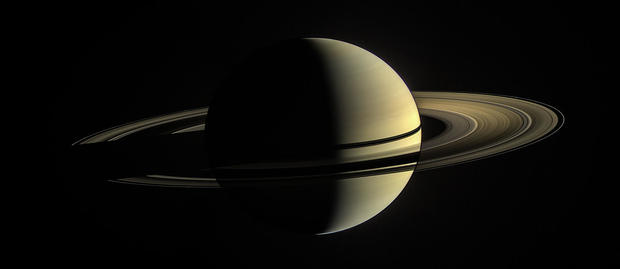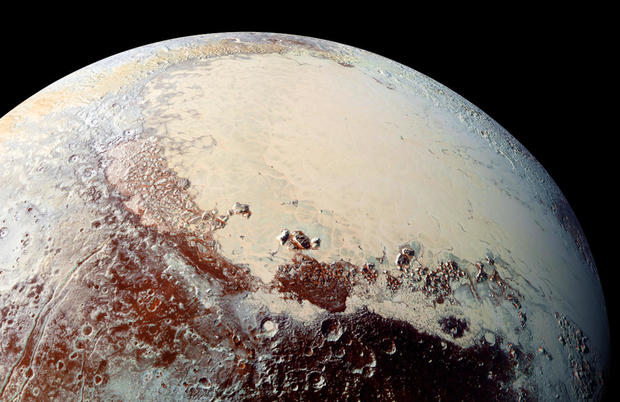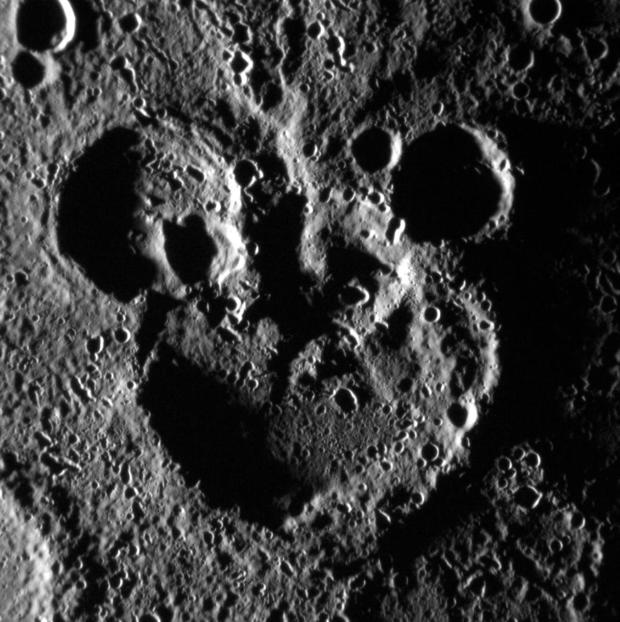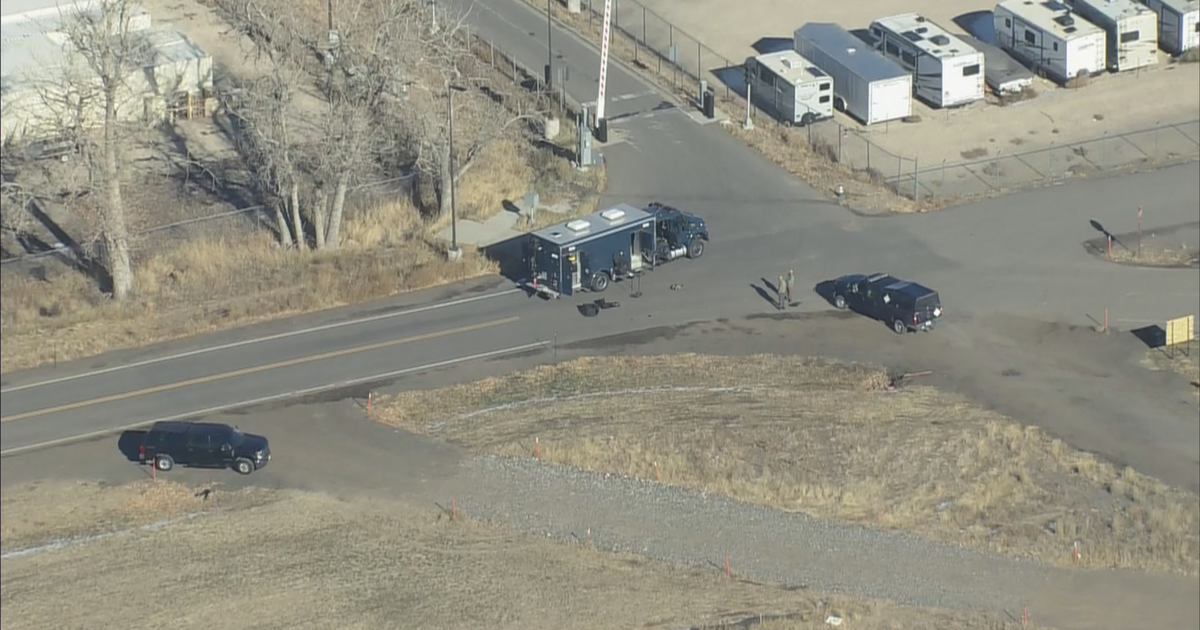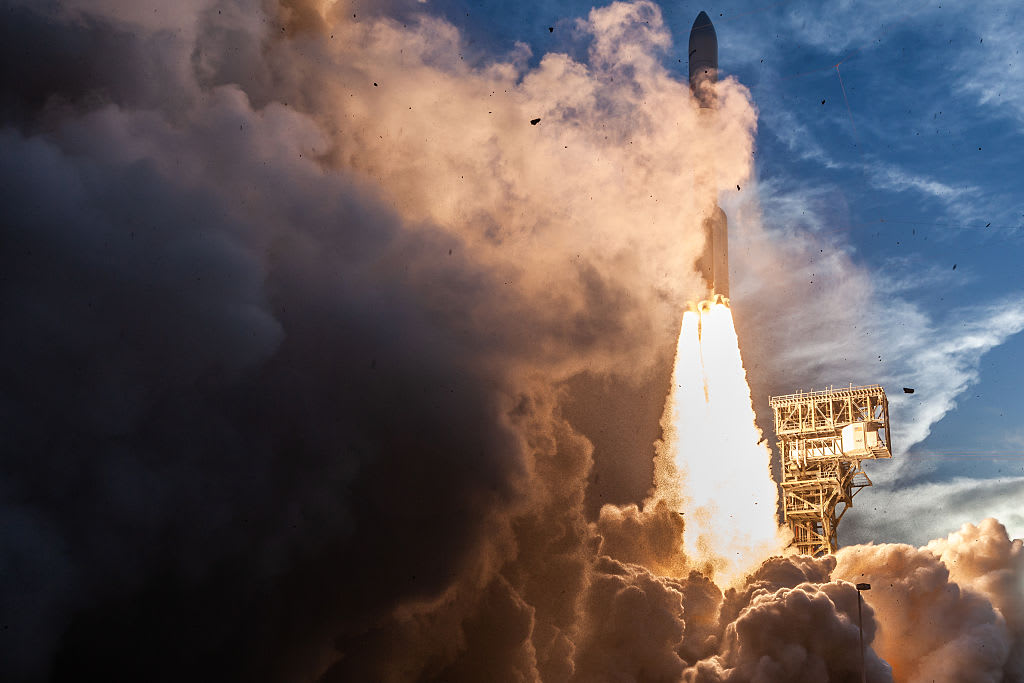50 gorgeous photos of outer space
Humans have looked to the stars since the dawn of civilization. For thousands of years, we've charted and mythologized the cosmic mysteries of the night sky.
Ancient Egyptians watched the star Sirius as an important part of calendar keeping. Astrologers have searched for human meaning in the stars since at least the 3rd millennium BC. And Albert Einstein posited that space and time are intertwined in an infinite fabric stretching in all directions.
In the grand scheme of things, our exploration of the world outside Earth's atmosphere began very recently. July 29, 2021, marked the 63rd anniversary of NASA's establishment. And, more that six decades later, we still make new discoveries about our universe every day.
With a small army of spacecraft and the most powerful telescopes in the world, NASA has captured some truly beautiful photos of outer space.
It's time to explore the universe...
Floating over the Bahamas
Between 1981 and 2011, the space shuttle program taxied a lot of power into (and out of) Earth's orbit. Shuttles aided in the construction of the International Space Station, launched the Hubble Space Telescope and carried interplanetary probes out of Earth's atmosphere.
Here, astronauts on the International Space Station capture a photo of the shuttle Atlantis floating over the Bahamas. This mission, the last of the space shuttle program, launched on July 8, 2011.
Faraway places
NASA's Juno spacecraft arrived at Jupiter, the gas giant, in 2016 and is still active. The un-piloted probe captured this image of Jupiter's turbulent atmosphere.
Jupiter is the largest planet in our solar system. Its atmosphere contains mostly molecular hydrogen and helium.
Wild horses
This stunning image of the Horsehead Nebula, in the constellation Orion, was captured by a telescope at the Kitt Peak National Observatory in Arizona.
This dense dust cloud formation is approximately 1,375 light-years from Earth.
Quite the panorama
NASA worked with the European Space Agency (ESA), and the Italian Space Agency (ASI) to build Cassini, a space probe to study Saturn and its system.
The probe entered Saturn's orbit in July 2004 and spent 13 years studying the ringed planet, capturing images of Saturn's moons, rings and this amazing panoramic view.
Edge of destruction
The Hubble Space Telescope captured this image of AG Carinae, one of the Milky Way's brightest stars.
The star is surrounded by a halo of dust and gas. Scientists believe this enormous nebula emerged after one or more giant eruptions about 10,000 years ago. The cloud itself is 5 light-years wide, or the approximate distance between Earth and our next nearest star system, Alpha Centauri.
An explosion of color
A supernova is a massive explosion that occurs at the end of a star's life. The Chandra X-ray Observatory, a sophisticated space telescope, captured the aftermath of such an explosion in the constellation Cassiopeia.
This photo shows the X-ray radiation emitted from the Tycho supernova remnant, first spotted in 1572.
On March 18, 2021, a Japanese amateur astronomer, Yuji Nakamura, spotted a new (new to us Earthlings, anyway) nova in the Cassiopeia constellation, dubbed Nova Cas 2021.
The buddy system
The Hubble telescope's wide-field camera spotted these two galaxies in the Perseus cluster.
Consisting of thousands of galaxies, the cluster is one of the largest objects in the known universe.
Middle of the action
The Spitzer Space Telescope's infrared cameras took this image of the crowded core of the Milky Way.
Scientists believe there is a supermassive black hole at the center of our galaxy, called Sagittarius A.
Prolific Medusa
The Hubble telescope captured this image of the Medusa merger, a pair of interacting galaxies in the Ursa Major constellation.
The center, nicknamed the Eye of Medusa, is a gas-rich, 500 light-year wide area of extreme star formation.
Pillars of Creation
The Eagle Nebula, also known as Messier 16, is the site of another region rich in star formation, aptly called the Pillars of Creation.
This image combines X-ray imaging from the Chandra X-ray Observatory with optical data from the Hubble Space Telescope.
Lights of Scorpio
This is the globular cluster NGC 6380, which lies around 35,000 light-years from Earth, in the constellation Scorpio.
The bright star in the foreground is HD 159073, a star 4,000 light-years from our planet.
Atmospheric light show
Earth's aurora are a beautiful sight to see from the ground, but they also put on quite a show in space.
This is what they look like from orbit.
Up close and personal
Here's a series of images from Juno's eighth Jupiter flyby.
The probe made its 34th close flyby of the planet in June 2021.
Kaleidoscopic gasses
Here's another shot of Jupiter taken by NASA's Juno probe.
This image shows the planet's swirling southern hemisphere.
Home improvement
Here's an impressive view of a couple of humans on a spacewalk.
Here, Shane Kimbrough of NASA (left) and Thomas Pesquet of the European Space Agency install new solar arrays on the outside of the International Space Station.
Golden hour
Our little blue space marble looks pretty impressive from more than 250 miles up.
Here, the Indian Ocean reflects golden sunlight.
The claw
Aerospace technology company Northrop Grumman sent this Cygnus space freighter to the International Space Station.
The robotic arm is one of Canada's contributions to the station. The arm performs maintenance, moves equipment and catches visiting vehicles, like this freighter, and escorts them to berth.
Glowing gasses
NGC 2313 is an emission nebula — a cloud of ionized gas that emits its own light — approximately 3,756 light-years away from Earth in the constellation of Monoceros.
The Hubble Space Telescope spotted the glowing formation.
Opportunity knocks
NASA's Opportunity Mars rover took this photo of the wide-open terrain on the red planet.
Opportunity landed on the Martian surface in 2004. NASA lost contact with the spacecraft in June 2018, when a Mars-wide dust storm left it buried.
A selfie
The InSight lander touched down on November 26, 2018, in the Elysium Planitia region of Mars. This selfie was one of the first transmissions back to Earth.
The lander's name is actually an acronym for Interior Exploration using Seismic Investigations, Geodesy and Heat Transport. Its mission: to study Mars' deep interior.
Ripples on Mars
NASA's Mars Reconnaissance Orbiter captured this image of ripples on the planet's surface.
But that's not liquid. Those ripples are wind-sculpted patterns in the sand.
Venus flyby
The unpiloted Mariner 10 spacecraft launched in 1973 to collect data on the atmosphere, surface, and body characteristics of Mercury and Venus.
This photo shows Venus shrouded by a thick layer of clouds.
Gravitational pull
This formation is caused by the gravitational energy of a supermassive black hole in the core of the Hercules A galaxy.
This image is a composite of visible-light information from the Hubble Space Telescope and radio data from the Very Large Array radio astronomy observatory in New Mexico.
Spacewalk
Here's another look at spacewalker Shane Kimbrough installing a solar array at the International Space Station.
Kimbrough is assigned as the commander of the NASA SpaceX Crew-2 mission to the International Space Station scheduled to return to Earth in fall 2021.
Sunrise from above
ESA astronaut Thomas Pesquet took this photo of sunrise over the Indian Ocean from the International Space Station.
Because the station orbits Earth every 90 minutes, astronauts stationed there can see 15 sunrises per day.
Sunrise, sunset
The Expedition 7 crew caught this impressive sunset from the International Space Station in 2003.
That's the Pacific Ocean visible below the clouds.
Among the stars
And the night sky doesn't look too shabby either.
Astronaut Scott Kelly posted this image to Twitter on August 9, 2015, during his yearlong mission at the International Space Station.
Way up
Here's one last look at the exterior of the International Space Station before we head back out into space.
The South Atlantic Ocean is visible 273 miles below.
Toes in the sand
NASA's Mars Curiosity Rover landed on the Martian surface in August 2012. As of publication, the rover is still active.
Its mission is to search for conditions favorable for microbial life and to conduct planetary habitability studies in preparation for human exploration.
Desert next door
The Curiosity rover also took this photo of the "Kimberley" formation with Mount Sharp in the distance.
The dry, sandy landscape resembles some of Earth's sprawling deserts.
Storm brewing
Juno snapped this photo of swirling clouds on Jupiter's surface during a close flyby in 2018.
The white oval near the top of the frame is a storm.
A stellar nursery
Messier 33, or The Triangulum Galaxy, is 2.73 million light-years from Earth in the Triangulum constellation.
This wispy area of the galaxy is one of rapid star birth. Scientists think around 200 young stars reside in this region.
Twinkle twinkle
Here's another example of an emission nebula — this one sports the unassuming name NGC 2313 — illuminating the sky with a silvery glow in front of the bright star V565.
The Hubble Space Telescope captured this photo.
Another blue planet
The Voyager 2 spacecraft gave humanity its first look at Neptune in 1989.
Neptune is 17 times the mass of Earth and circles the sun once every 164.8 Earth years.
Earthlike
Scientists believe that Earth and Titan, Saturn's largest moon, share some important qualities. According to NASA, no other place in the solar system has "Earthlike" liquid activity on its surface.
But there are a few problems for those looking to start a new life on the faraway moon. First, the surface of Titan is around minus-290 degrees Fahrenheit and receives 1% of the sunlight compared to Earth's surface. Perhaps more importantly, the liquid that makes up Titan's lakes, rivers and seas is a mix of methane ethane.
Infrared info
Infrared cameras on-board Cassini collected 13 years of surface data during flybys of Titan.
Observing this moon's surface can be tricky, because the thick atmosphere scatters most visible light, but these infrared images seem to show complex geologic and oceanic features.
Many moons
In 2011, Cassini captured five of Saturn's moons in a single frame.
From left to right, those moons are Janus, Pandora, Enceladus, Mimas and Rhea.
Moon closeup
In this photo, also from the Cassini mission, Saturn's largest moon Titan is visible beyond smaller Tethys.
Scientists believe that Tethys is made almost entirely of water ice, with a very small percentage of rock.
Dione
Saturn has 82 moons in total, and 53 of those have official names.
This one is called Dione. It's the planet's fourth-largest moon and is 234,500 miles from Saturn. That's roughly the same distance from Earth to our moon.
Earth's moon
The Expedition 10 crew snapped this photo of the full moon from the International Space Station.
Our moon is the fifth-largest in the solar system and the largest moon relative to the size of the planet it orbits.
Signs of life
The glow from cities in Europe and Africa is visible from outer space.
If you look closely, you can even see the webbing of city streets.
Texas, from above
This photo, captured by the Expedition 36 crew aboard the International Space Station in 2013, shows some of Texas' population centers.
Houston, where the the NASA Johnson Space Center is located, is the in the lower half of the frame, near the center.
A fresh weather report
The Hubble Space Telescope took this picture of Jupiter in August 2020.
The super-sharp image shows new storms and atmospheric turbulence on the gas giant.
Staring at the sun
This 2015 image of our sun is a composite from three different spacecrafts measuring three different kinds of energy.
High-energy X-rays, tracked by NASA's NuSTAR telescope, appear blue. Low-energy X-rays, collected by Japan's Hinode spacecraft, are green. And ultraviolet light, measured by NASA's Solar Dynamics Observatory, appear in red and yellow.
Saturn in the sunlight
This was Cassini's view from Saturn's orbit in 2010.
Like Jupiter, Saturn's atmosphere is rich in hydrogen and helium.
Hello, Pluto
Long known as the ninth planet in our solar system, Pluto was downgraded in status to a dwarf planet in 2006.
This infrared image shows a glacier on the dwarf planet's surface. Pluto is about half the size of Earth's moon.
A moon for Pluto
In January 2015, NASA's New Horizons space probe began its approach of Pluto and its five moons.
This image of Pluto's largest moon, Charon, shows a rust-colored spot, made of organic compounds called tholins. Scientists believe these tholins are a product of methane, nitrogen and other gasses released from Pluto's atmosphere and deposited on the moon.
lagoonnebula
This formation, some 4,000 light-years from Earth, is known by many names: NGC 6523, the Lagoon Nebula or Messier 8.
The giant interstellar dust cloud is located in the constellation Sagittarius.
Mice in space?
And, last but not least, here's a photo of craters on Mercury that look like Disney mascot Mickey Mouse.
This photo was captured by NASA's Messenger probe in 2012.

